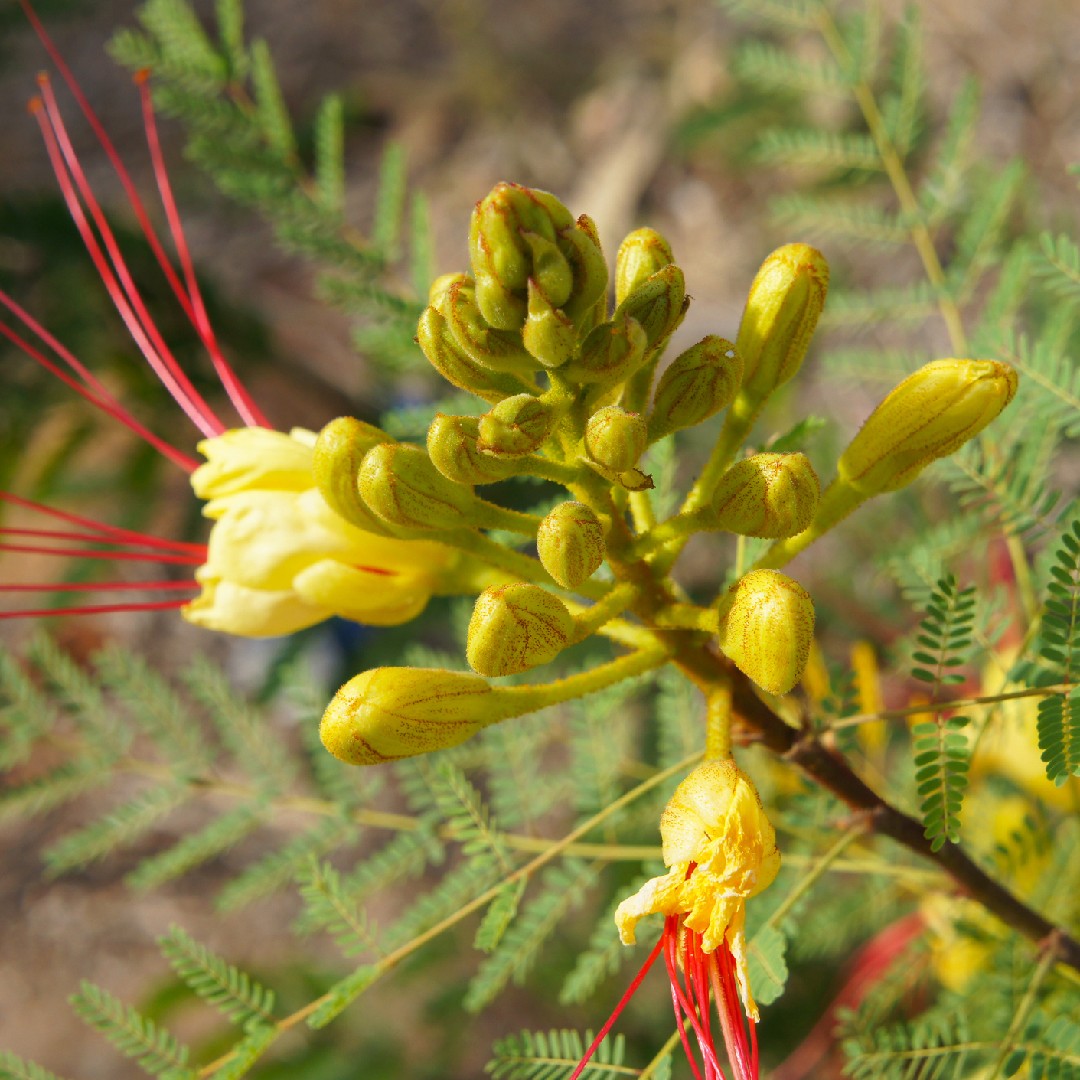How To Grow Caesalpinia Gilliesii
Title: How to Grow Caesalpinia Gilliesii
Introduction:
Caesalpinia gilliesii, commonly known as the desert bird of paradise, is a beautiful and easy-to-grow shrub or small tree that is native to Argentina and Uruguay. It is prized for its bright yellow flowers with long, protruding red stamens, which bloom in summer. The plant is also drought-tolerant and can thrive in hot, dry climates.
If you are looking for a colorful and low-maintenance addition to your landscape, Caesalpinia gilliesii is a great choice. Here are some tips on how to grow it successfully:
Main Content:
- Choose the right location. Caesalpinia gilliesii prefers full sun and well-drained soil. It can tolerate some light shade, but it will not flower as well in shaded areas.
- Planting. Plant Caesalpinia gilliesii in the spring or fall. Dig a hole that is twice the width of the root ball and slightly deeper than the depth of the root ball. Backfill the hole with soil and water well.
- Watering. Water Caesalpinia gilliesii regularly, especially during the first year after planting. Once the plant is established, it can tolerate some drought.
- Fertilizing. Fertilize Caesalpinia gilliesii once a year in the spring with a balanced fertilizer.
- Pruning. Caesalpinia gilliesii does not require much pruning. However, you may want to trim it back in the spring to encourage new growth and flowering.
- Overwintering. If you live in a cold climate, you may need to bring Caesalpinia gilliesii indoors for the winter. Place it in a bright, sunny spot and water it sparingly.
Conclusion:
With proper care, Caesalpinia gilliesii will thrive for many years in your landscape. It is a beautiful and low-maintenance plant that will add a splash of color to your garden.
Caesalpinia gilliesii, also known as the Chilean bird of paradise, is a beautiful flowering shrub that is native to Argentina and Chile. It grows to be about 6 feet tall and has bright orange flowers that bloom in the spring and summer. Caesalpinia gilliesii is a relatively easy plant to care for and can be grown in full sun or partial shade. It prefers well-drained soil and should be watered regularly, especially during the hot summer months.
If you are interested in learning more about Caesalpinia gilliesii, please visit Home Gardening. This website has a wealth of information on the plant, including its care requirements, propagation methods, and pest and disease control.
FAQ of caesalpinia gilliesii
- What is Caesalpinia gilliesii?
- Caesalpinia gilliesii, also known as poinciana, is a tropical flowering tree that is native to South America. It is known for its bright orange-red flowers and its long, slender pods.
- What are the benefits of Caesalpinia gilliesii?
- Caesalpinia gilliesii has a number of benefits, including:
- It is a beautiful ornamental plant that can add color and interest to any landscape.
- It can be used to create shade, as it can grow up to 30 feet tall.
- The flowers of Caesalpinia gilliesii are edible and can be used to make tea or syrup.
- The bark of the tree can be used to make a dye.
- The roots of the tree have been used in traditional medicine to treat a variety of ailments, including fever, sores, and cough.
- Caesalpinia gilliesii has a number of benefits, including:
- How to care for Caesalpinia gilliesii?
- Caesalpinia gilliesii is a relatively easy plant to care for. It prefers full sun and well-drained soil. It should be watered regularly, especially during the summer months. It is also important to fertilize Caesalpinia gilliesii once a month during the spring and summer.
- Is Caesalpinia gilliesii poisonous?
- The bark, leaves, and flowers of Caesalpinia gilliesii are poisonous to humans and animals. If ingested, they can cause vomiting, diarrhea, and other symptoms. If you think you or someone you know has ingested Caesalpinia gilliesii, please seek medical attention immediately.
Image of caesalpinia gilliesii
10 different images of Caesalpinia gilliesii that are free to use:
- A close-up of the flowers of Caesalpinia gilliesii. The flowers are bright orange and yellow, and they have a long, slender shape.

- A full-size image of a Caesalpinia gilliesii tree in bloom. The tree is covered in bright orange and yellow flowers, and it is a beautiful sight to behold.

- A group of Caesalpinia gilliesii trees growing in a field. The trees are all in full bloom, and they add a splash of color to the landscape.
- A single Caesalpinia gilliesii tree against a blue sky. The tree is in full bloom, and its bright orange and yellow flowers stand out against the blue sky.

- A close-up of the leaves of Caesalpinia gilliesii. The leaves are dark green and have a glossy appearance.

- A full-size image of a Caesalpinia gilliesii tree with its leaves in fall colors. The leaves are a mix of orange, yellow, and red, and they provide a beautiful display of fall foliage.

- A group of Caesalpinia gilliesii trees growing in a forest. The trees are all in different stages of growth, and they provide a variety of colors and textures to the forest landscape.

- A single Caesalpinia gilliesii tree in a garden. The tree is in full bloom, and it is a focal point of the garden.

- A close-up of the seed pods of Caesalpinia gilliesii. The seed pods are brown and have a long, slender shape.

- A bird sitting on a branch of a Caesalpinia gilliesii tree. The bird is a beautiful blue color, and it provides a splash of color against the green leaves of the tree.

Post a Comment for "How To Grow Caesalpinia Gilliesii"